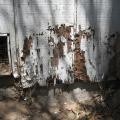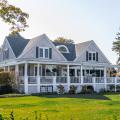A Guide to Commercial Window Frames and Styles
If you’re looking to give your commercial property some upgrades, window framing is one way to do that. Window framing is the part of the window that provides structural support for the glass portion to be put in. They can be replaced to provide more insulation, a different appearance, or a more modern/functional look. They can also make the windows more energy efficient, so while there are costs up front, it will pay for itself through the money saved on heating and cooling bills.
Here’s a brief guide to the top window frame materials and styles to choose from to make your commercial property more modern, functional, and energy efficient.
How To Choose the Best Window Frame and Style
When determining the window frame and style for your commercial property, first consider how durable it needs to be. Think about the wear and tear the frame and window will experience (which influences the material it should be). Geographical region and climate both play a role in a window’s lifespan, so you’ll want to choose a window with resilience to natural damages from weather. The materials need to be suitable for weather conditions in your area.
Some materials are more energy-efficient than others, which can help save you significant dollars on heating and cooling costs in the long run. Energy efficiency can also increase your commercial property’s value, so consider whether this is an important factor.
Finally, materials also vary in price, though while the up-front can be more, they may last longer and require less maintenance. Think about your budget and both short- and long-term costs and savings.
Window Frame Materials
There are five primary window frame materials, each with pros and cons depending on your needs:
- Aluminum
Aluminum is durable and long-lasting while requiring little maintenance. The study framing has a more modern look, and resists weather including sunlight, rot, and mold. These frames can last 40 to 50 years with proper care, but they are not very energy efficient. Aluminum conducts heat, so it’s susceptible to expanding and contracting. This material is also more expensive.
- Composite
Composite is made of wood + vinyl or aluminum, giving it the same look and feel as wood but much more durability. Composite is highly weather resistant and can last 15 to 30 years with proper care. While this material can be expensive, it has strength and durability to keep it lasting longer.
- Vinyl
Vinyl is made of PVC, which is the same material used to make pipes and fittings for pluming. It’s one of the most popular and affordable framing materials, and offers good insulation, making it very energy efficient. Additionally, there are a number of design choices to choose from. While vinyl can last to 40 years with proper care, it’s not as strong as fiberglass, wood, or aluminum.
- Fiberglass
Fiberglass is less common and more expensive, but it’s highly resistant to weather and heat and due to its similar shape to vinyl, it comes in a variety of styles and designs. Fiberglass is an excellent insulator, making it very energy efficient, and it can last up to 80 years with proper care.
- Wood
Wood is the most eco-friendly and has the most traditional look and feel. Plus, it provides good insulation. However, it’s expensive compared to vinyl or fiberglass and requires regular maintenance as it can suffer from severe expansion and contraction and is susceptible to rot and weathering. Wood lasts about 10 to 20 years with proper care.
Window Frame Styles
When replacing window frames, you first must decide if you want a full frame of open glass or a divided frame. You can also have faux dividers that make windows look separated when they are not.
Options of classic windowpanes to choose from include:
- Authentic divided: Small pieces of glass between each divider. More expensive and more work to create and make the structure weaker. Give the old-fashioned look popular with many commercial buildings, but also have a more obstructed view.
- Attached grid: Full pane of glass with dividers glued to the surface. Appear authentic like divided, but more affordable and efficient.
- Faux grid: Grids sit in front of the window as part of the frame. Not as realistic of a look, but easy to clean and less obstructed view.
Choosing A Window Framing Contractor
Windows are an essential part of your home, so it’s important to choose a contractor who you can trust. Ask your friends and family who they would recommend, and research your options thoroughly. Talk to the contractor about the about the quality of tools, equipment, and materials they use. Ask for references or examples of work they’ve done in the past.
It’s important to choose a contractor who has partnerships that allow them to source the right product for your project at a competitive price. Also, can be helpful if they have experience working on historic properties and with regulatory agencies across federal, state, and local jurisdictions.
More to Read:
Previous Posts:








